Spinal diseases are younger a year.One of the most common remaining osteochondrosis, which has only recently been regarded as an age -related disease.If this affects the cervical spine, the neck, arms and head may be quite severe pain, significantly reducing the quality of life.This is often accompanied by many other disorders and, if not treated, leads to the development of intervertebral hernia, which requires a large amount of surgical intervention.Therefore, it is important to diagnose the cervix osteochondrosis as soon as possible and to start treatment according to the situation.
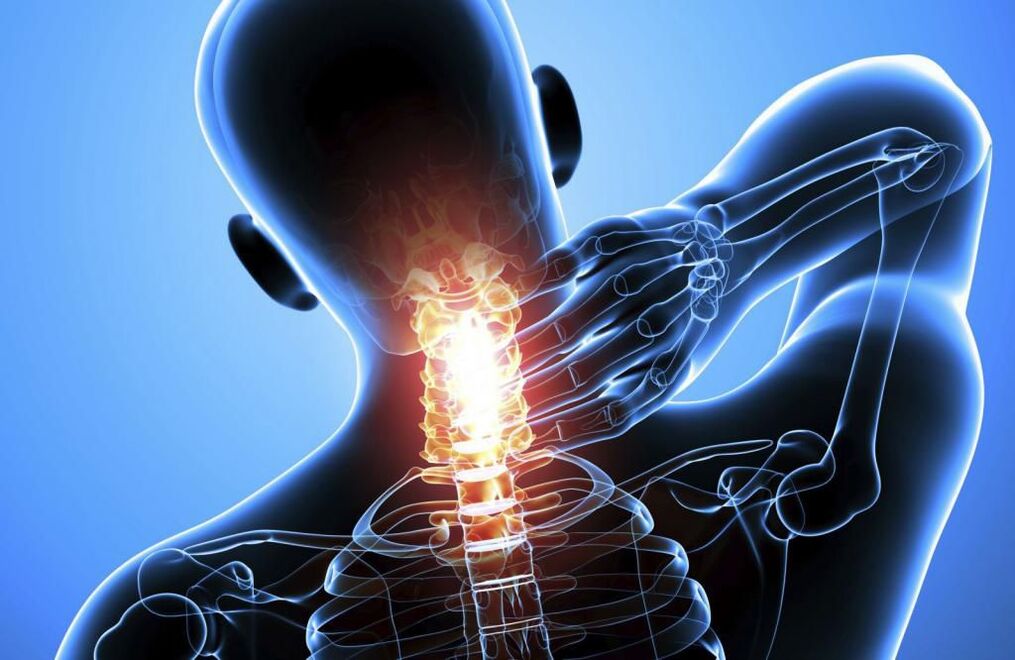
Symptoms of osteochondrosis of the cervical spine
Cervical spine osteochondrosis is a disease in which degenerative changes occur in intervertebral discs.Initially, the discs, which are cartilage rings that contain jelly-like content, dry out.This is most often a sitting lifestyle, longer computer work, poor posture, cervical injuries and many other factors.
This leads to a decrease in the strength of collagen fibers forming the ring fibrosus.As a result, its thickness gradually decreases, which becomes the main cause of the symptoms of the cervix osteochondrosis:
- Cervical pain has variable intensity;
- Headache, dizziness, loss of awareness caused by violation of the cervix spinal arteries, directly through the spine, ie the development of the spine arterial syndrome;
- fluctuations at the level of blood pressure;
- Radicular syndrome caused by the sting of spinal roots, from the neck from the arms to the hands and the fingers, to the head, the shoulders, the appearance of sensory disorders, the appearance of goose camera, numbness, etc.
- decrease in the range of neck movement, appearance or increasing pain when performing certain movements;
- increased fatigue, reduced performance;
- Tinning, reduced visual acuity, development of ENT pathologies that are difficult to handle.
There are 7 vertebrae in the cervical spine.Osteochondrosis is most often affected by discs between 5 and 6 and 6 and 7.
In such situations, you need to contact a neurologist who prescribes an MRI.The results of the study allow the exact identification of osteochondrosis at any earliest stage of development and to select treatment.
Stages of development
Usually there are 4 stages of the formation of osteochondrosis:
- Grade 1 - Pathological changes are just beginning to appear in the intervertebral disc, so the symptoms are mild and can only be observed from time to time.In such situations, treatment will be as effective and simple as possible.
- Degree 2 - Changes in plates become more pronounced, leading to the appearance of neck pain, which occurs and increases when head movements are performed.
- Grade 3 - The pain becomes almost constant and can become complicated by the development of spinal arterial syndrome, protrusion and intervertebral hernia.
- Degree 4 - The disc is so destroyed that the possibility of movement in the affected spinal movement segment is almost completely excluded.In this case, severe pain is observed, radicular syndrome often develops and one or both spine arteries are pinched, leading to the appearance of characteristic symptoms.
Treatment of cervical osteochondrosis
Thus, the treatment tactics of cervical osteochondrosis depend on the severity of degenerative changes in the intervertebral discs, the age and individual properties of the patient.Therefore, each patient has always been developed separately, but always aimed at solving the following problems:
- eliminating the patient's quality of life exacerbating unpleasant symptoms;
- Improving the quality of cervical blood circulation;
- Improving metabolism processes in the affected area;
- Eliminating the causes of degenerative-dynist changes in intervertebral discs;
- Reducing the risk of developing complications of osteochondrosis, ie protrusions, vertebral hernia, spondylosis, etc.
In general, at all stages of the development of the disease, the use of various therapeutic measures is indicated.If section 1 is sufficient to set up a lifestyle and participation in exercise therapy, it should be used in Section 2 more extensive effects, as well as taking many medicines, manual therapeutic sessions, using orthopedic tools, etc.
But patients need to understand that it is impossible to achieve the reverse regression of degenerative-dynist changes that have already occurred, especially when diagnosed with osteochondrosis 2 or more.In such situations, the aim of the treatment is to improve the patient's welfare and to stop further progress in the disease.Occasionally, the situation can only be completely corrected in the first phase of osteochondrosis, but at this stage of development, pathology is extremely rarely diagnosed, as patients only perceive cervical discomfort, only as a sign of fatigue and do not consult a doctor.
In more severe cases, the treatment of osteochondrosis of the cervical spine will be even more complex and longer.In any case, it is performed under the supervision of a neurologist through periodic tracking tests and adjustment of therapy, depending on the changes in the patient's well -being.
Lifestyle
We recommend that all patients diagnosed with osteochondrosis of the cervix be made to make certain changes in their lifestyle.In each case, these recommendations vary depending on the characteristics of the person's professional activity and many others.
For the vast majority, we recommend that you increase exercise levels and take a break from work at least every hour to warm up when the seat.In cases where the patient is actively involved in the sport, we recommend that you reduce the load on the cervix.This proved to give up running, jumping sports, weight lifting and wrestling.
Overweight people are also recommended to take measures to reduce it and change their diet.When osteochondrosis is already done, it is important that the diet meets the daily needs of the body as fully as possible.Therefore, it is worth giving up fast food and semi -finished products and bring your diet closer to rational.This means that it is worth creating a menu, so half of the diet consists of vegetables and fruits and contains enough protein.
Medication for the cervix osteochondrosis
Medication is primarily aimed at eliminating the unpleasant symptoms of osteochondrosis of the cervical spine.As a general rule, it is complex and includes the use of drugs from different groups, each of which solves specific problems.Therefore, it was developed separately for each patient.
NSAIDS
Non-steroidal anti-inflammatory drugs or NSAIDs are a wide group of drugs that have not only anti-inflammatory properties but also analgesic properties.They are available in various forms of dosage, including tablets, capsules, ointments, gels and creams, and intramuscular administration solutions.NSAIDs should only be used on demand, that is, when severe neck pain occurs.
In case of severe pain, the NSAIDs can be administered intramuscularly.
The disadvantage of oral drugs from the NSAID group is that it has an irritating effect on the stomach and duodenum mucosa membrane.It can provoke deterioration of these organs, especially gastritis and peptic ulcers.To reduce such risks, proton pump inhibitors are prescribed in combination with them.
There are drugs that gently affect the gastrointestinal tract system as they are widely prescribed to relieve pain and inflammation in osteochondrosis.In addition, more advanced drugs have already been developed and is characterized by a selective effect, which is often prescribed for osteochondrosis, but they are more expensive and are not available to all patients.
Corticosteroids and injections (blockades)
Corticosteroids are hormonal drugs suffering from severe inflammatory processes.They can cause many undesirable consequences with long -term use and are therefore prescribed in short courses in the most difficult cases.As a general rule, the use of injection solutions is justified as the administration method can be much easier to tolerate these drugs and are less likely to cause side effects.
Corticosteroids are often used in combination with local anesthesia when they are performed, that is, very severe pain is rapidly relieved by leading the prepared mixture to special points near the spinal nerve passage.The procedure requires certain skills and dexterity, so it can only be done in medical schools with specially trained medical workers.Otherwise, the likelihood of unwanted consequences and complications is very high.
We recommend that you take a blockade up to four times a year.
Muscular
Muscle loosers are a group of drugs used to eliminate reflex muscle spasms caused by the acute inflammatory procedure.This often occurs in the cervix with osteochondrosis and causes severe pain in the neck, which further exacerbates the situation.
Vitamins
Because osteochondrosis creates significant prerequisites for compression of the spine roots, it is often indicated that they are primarily taking vitamins containing vitamins B.They are directly involved in the transmission of nerve impulses, which is particularly important in the development of radicular syndrome.
Chondropotectors
Chondroprotectors are drugs that arise many debates.These are based on substances used by the body to restore damaged cartilage tissue, which determines the indications of their use in the cervix in osteochondrosis.However, there is no convincing evidence of their effectiveness in advanced forms of the disease.In the early stages of osteochondrosis, they actually have a positive effect on the condition of the intervertebral discs, which results in an improvement in the patient's well -being.And in later stages, they can only help prevent further progression of degenerative changes in intervertebral plates.
Chondroprotectors are produced in the form of powders, capsules, products, and to solve intramuscular administration.The biggest positive effect was seen from the latter.
Current products
These are precisely the drugs available in the form of gel, cream or ointment that are often used by patients when signs of osteochondrosis of the cervix appear.They have different effects, including anti -inflammatory, pain relief, heating or vice versa cooling and local irritating.
These products often contain NSAIDs, thus promoting pain, but is primarily effective in the early stages of osteochondrosis.In addition, the ingredients of such drugs can be menthol, hot pepper extract, snake or bee poison.
Local irritants affect the principle of irritation of the skin's nerve endings, which reduces the severity of the pain and the reduction of increased blood flow in the application.However, such drugs are only effective in the early stages of the development of cervical osteochondrosis.
Preparations to improve microcirculation
In this group, drugs are used to improve the quality of blood circulation, which is needed especially for spinal arterial syndrome.Many drugs have a vasodilator effect that improves brain nutrition and promotes tinnitus, headaches and dizziness.But without exerting pressure on the spine artery without effectively eliminating the factor, such treatment will only produce temporary results.
Practice therapy
Physiotherapy is the basis for the treatment of osteochondrosis of the cervix.Nowadays, there are many protected and generally accepted methods for the physical therapy of the cervix osteochondrosis, but patients have to understand that there are no universal exercises.Exercises should be selected on an individual basis for a specialist, taking into account not only the phase of degenerative-dynist changes, but also the age of the patient, the nature of existing simultaneous diseases, the presence of radicular syndrome, or the compression of vertebrate arteries.Therefore, various exercises are justified in the same patients who have approximately the same changes in intervertebral discs.
In general, physiotherapy is the following purpose:
- strengthening the muscles of the neck and upper shoulder;
- Activation of blood circulation in the affected area that contributes to the restoration of fibrous rings of the intervertebral discs;
- Normalization of muscle tone.
There is a need for exercise therapy every day.At first, it is best to participate in separate groups or work individually with a physical therapy instructor.This allows you to 100% acquire the technique of performing each recommended exercises so that it is a maximum advantage to implement it.The specialist helps to select the optimum load and develop a program to increase it, taking into account the level of physical development of the patient.
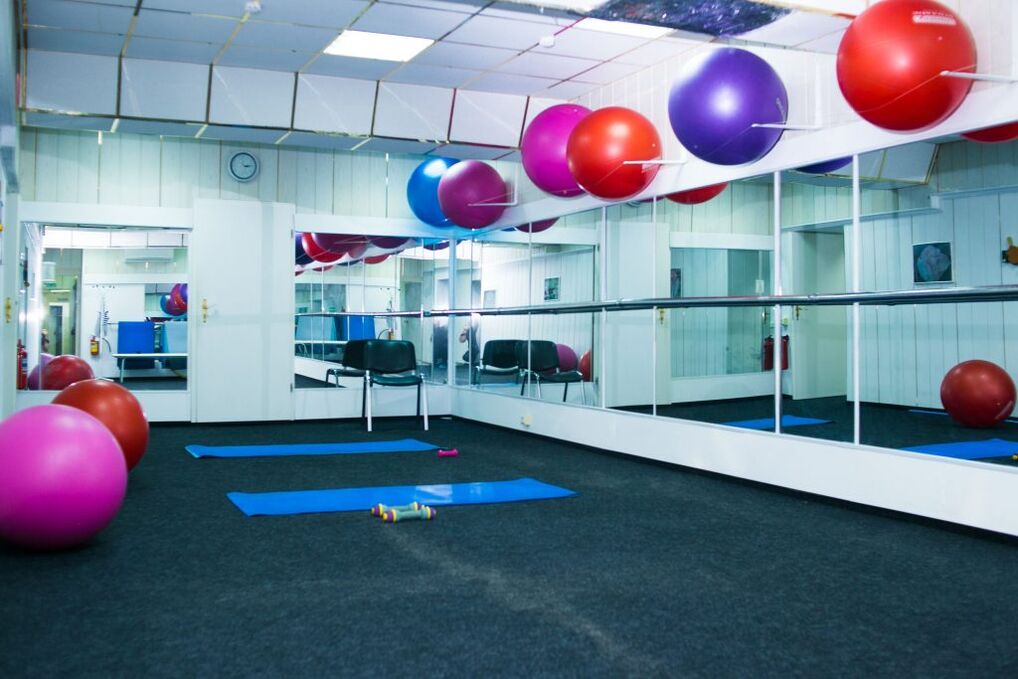
In the future, patients can exercise exercise independently at home.At the same time, it is important to approach this with full responsibility, and the exercises are done slowly, without hurrying and under comfortable conditions.But if the pain appears at any time during exercise, you should immediately stop the appearance of provocative practice and consult your doctor to determine the causes and improve the cervical osteochondrosis training therapy program.
During exercise therapy, it is forbidden to perform sudden, strong movements, rotation of your head or exercises by pain.In such situations, there is a great risk of exacerbating existing changes in discs instead of gaining the expected benefit.
Swimming has a very positive effect on the state of the spine.This is exactly the kind of sport that does not involve the stress of the discs, but actively involves the back and neck muscles.As a result, the muscle corset is effectively strengthened and serves as natural support for the spine.Therefore, if possible, patients are advised to visit the pelvis 2-3 times a week.
Manual therapy for cervical osteochondrosis
Manual therapy is one of the most effective methods for treating cervix osteochondrosis as it allows you to affect not only the muscles and soft tissues but also the spine.But it is very important to apply a responsible approach to selecting a chiropractor, as improper or too strong influence can lead to deterioration of the patient's condition and even to the development of complications.Such a specialist should not only have a tertiary medical degree and license to practice manual therapy, but also gently understand the characteristics of anatomy and osteochondrosis and have sufficient experience.
Do not mix hand therapy and therapeutic massage.The differences between this type of handhely are significant, as therapeutic massage includes only soft tissues, while the doctor also works on the spine during manual therapy.
So all manual therapeutic session begins with caressing that allows the skin to prepare for more active later effects.In the future, rubbing, kneading and pressing techniques will be used that allow the blood flow to be activated in the collar area, neck and upper back.As the skin and muscles become sufficiently and the patient relaxes, the doctor will begin to perform mobilization and manipulation techniques.These suggest that turns are achieved with oscillation movements, pushing it towards the most prominent restriction of movement, leading to increased mobility of the spine and eliminating functional blocks.
Thus, thanks to the skilled manual therapy, the following may be:
- Normalizes the position of the vertebrae, thereby eliminating increased pressure and favorable conditions for the discs between the vertebrae discs;
- eliminates the pain caused by osteochondrosis and complications of the cervix;
- Bring the too relaxed muscles to the normal tone and relax the cramped muscles;
- Increase neck mobility;
- eliminate pressure on the spine arteries and thus normalize the bloodstream of the brain;
- Remove the spinal roots from compression and thus normalize the conduct of bioelectric impulses to organs that are responsible as innervated and reduce pain.
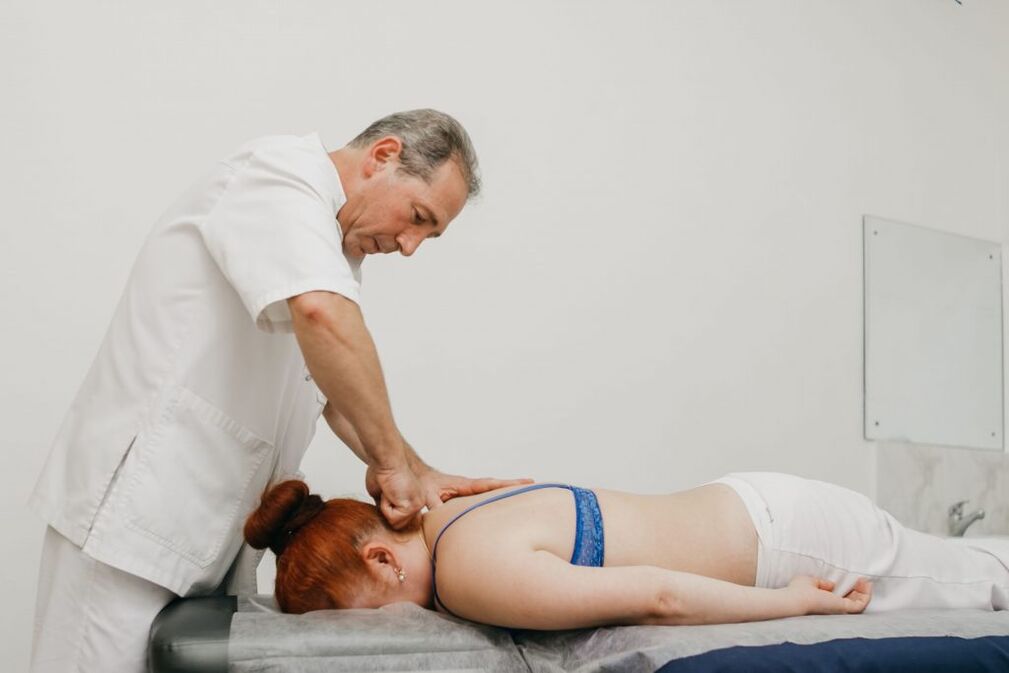
It is especially worth highlighting the author's manual therapeutic method.This includes the use of special patented collision techniques that allow the pronunciation result after session 1, not only osteochondrosis, but also part of the neck affected throughout the body.As a result, not only do the pain and other symptoms of the disease disappear, but the functioning of all organs also improves and the immune system is strengthened.Second and subsequent meetings improve the positive effect and consolidate what guarantees that if other medical recommendations are followed, the remission will last as long as possible.
Self -handle
To improve well -being, patients can regularly perform the neck of the neck to relieve feelings of fatigue and reduce pain.To do this, sit in a comfortable position and try to relax your cervical muscles.Then make caressing movements with the palm, gradually moves to the circular rubbing, securing the shoulder area.All movements are performed from the spine without sudden and without strong pressure.In this case, you can use local anti -inflammatory drugs recommended by your doctor.
Physiotherapy
Physiotherapy is indicated outside the acute inflammatory process.This allows you to consolidate the treatment results achieved and further improved the patient's condition.As a general rule, 10-15 procedures are prescribed, which is selected separately for each patient.Can be:
- Electrophoresis - It involves the use of electrical current to ensure deeper penetration of the drugs.
- Magnetotherapy - promotes the activation of blood circulation in the sphere of influence and stimulates the course of metabolic processes.In addition, magnetic therapeutic sessions have an analgesic effect and help to eliminate swelling.
- Laser therapy has an anti -inflammatory, vasodilator effect, leading to a reduction in the severity of pain.
- Ultrasonic therapy is a method of physiotherapy based on the positive effects of ultrasonic waves on the body.They help reduce the sensitivity of nerve endings and also have anti -inflammatory and analgesic effects.
- Diadinamic currents - procedures lead to reducing pain, tissue nutrition, positive effects on muscles and promotes inflammation.
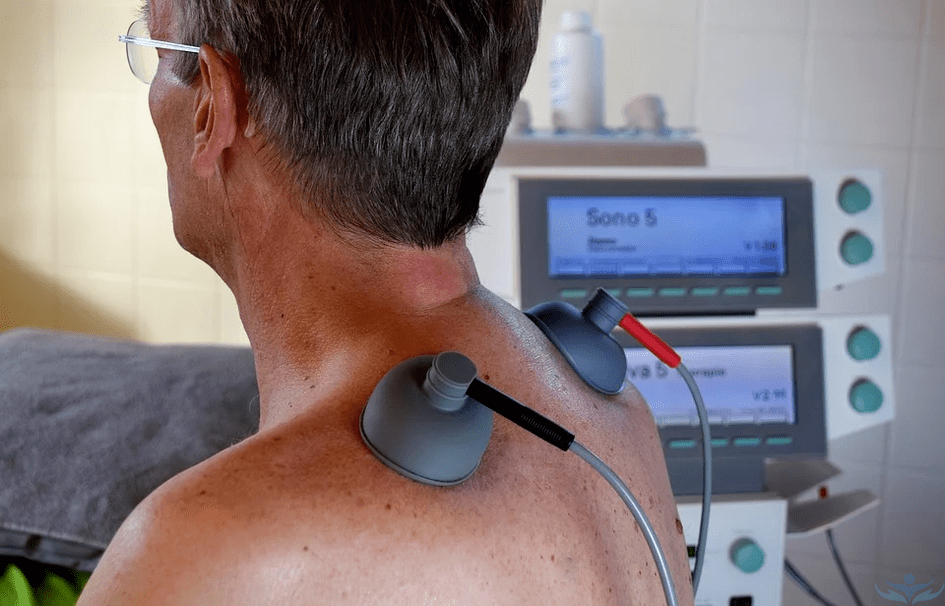
Traction therapy
When the vertebrae come together due to the smooth of the intervertebral discs, the towing therapy is warranted using a glisson loop.The essence of the method is to apply a precise tensile strength to the cervical spine using a special device that fixes your head and the opposite side is load.Such procedures contribute to increasing the distance between the vertebrae, which leads to a reduction in pressure on the plates and creates favorable conditions for healing.However, such therapy can only be prescribed by a doctor.
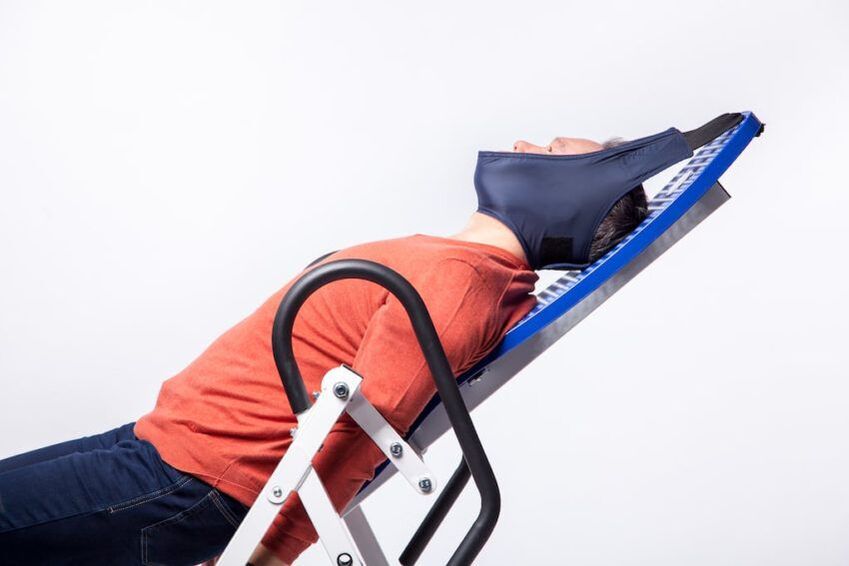
Pinch
Iclicator is a simple, affordable reflexological tool in the cervical area.It can be a plate that should be placed with spikes or similar tools but in the form of a cylinder.Due to thorns tingling, the skin receptors are irritated, leading to a more active blood flow in the affected area.
Some patients after using the applicator have a decrease in cervical pain and increase in performance, better sleep quality and restoration of cervical mobility.But if you have skin injuries in the affected area or vascular disease, do not use needle acid.
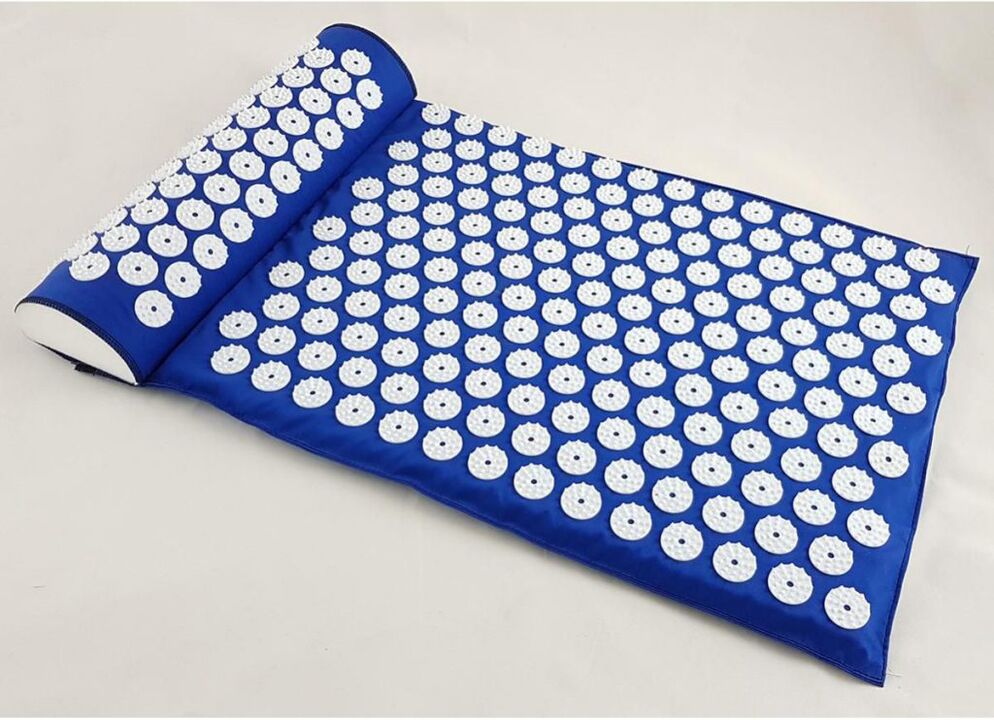
Orthopedic
To reduce the load on the cervical spine, it is advisable to turn the mattress and the pillow into orthopedic, as sleeping on an uncomfortable pillow causes further compression of spinal arteries and nerves during sleep.Orthopedic products are free from this disadvantage and ensure that the physiologically correct position of the spine is maintained, thereby reducing the rate of progression of existing osteochondrosis.
However, it is important to choose the right pillow and mattress to meet the patient's unique characteristics and contain proper charging.Thanks to them, we can improve the quality of sleep and wake up cheerfully in the morning.
In addition, some patients are recommended to wear a Shil collar.It is a removable orthopedic device that allows the neck to be fixed and can significantly reduce the load on the cervix, such as a computer or after suffering.The collar is placed up before the expected cervical load but must be removed during sleep.These are different in design, height, and fixing, so only the treating doctor can choose the optimal.
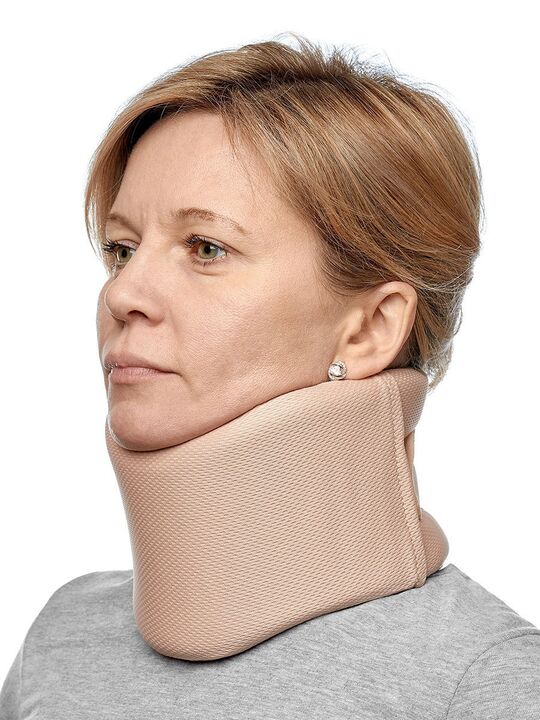
Thus, the treatment of osteochondrosis of the cervix can be quite long and complex.You have to be prepared for this, as there is no other way to stop the development of intervertebral discs, avoid complications and the need for surgery.But in most cases, patients' condition improves during the first weeks of treatment.At the same time, it is important not to be self -medication, but to contact a neurologist, as only one skilled professional is able to determine the degree of osteochondrosis and select the most appropriate treatment of the disease for a particular patient.

















































